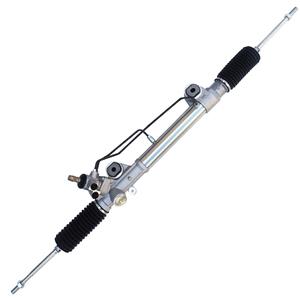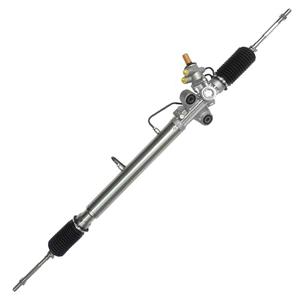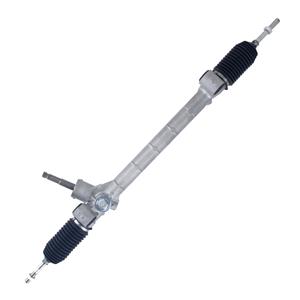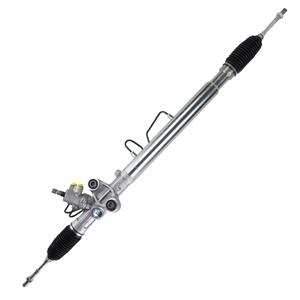What are the symptoms of car steering rack wear?
The steering rack is one of the core components of the car steering system, responsible for converting the rotational motion of the steering wheel into the left and right steering action of the wheels. As the vehicle is used for a longer time, the car steering rack will gradually wear out, and this wear may affect the vehicle's handling and driving safety. Therefore, it is important to understand and identify the early symptoms of car steering rack wear so that it can be repaired or replaced in time.
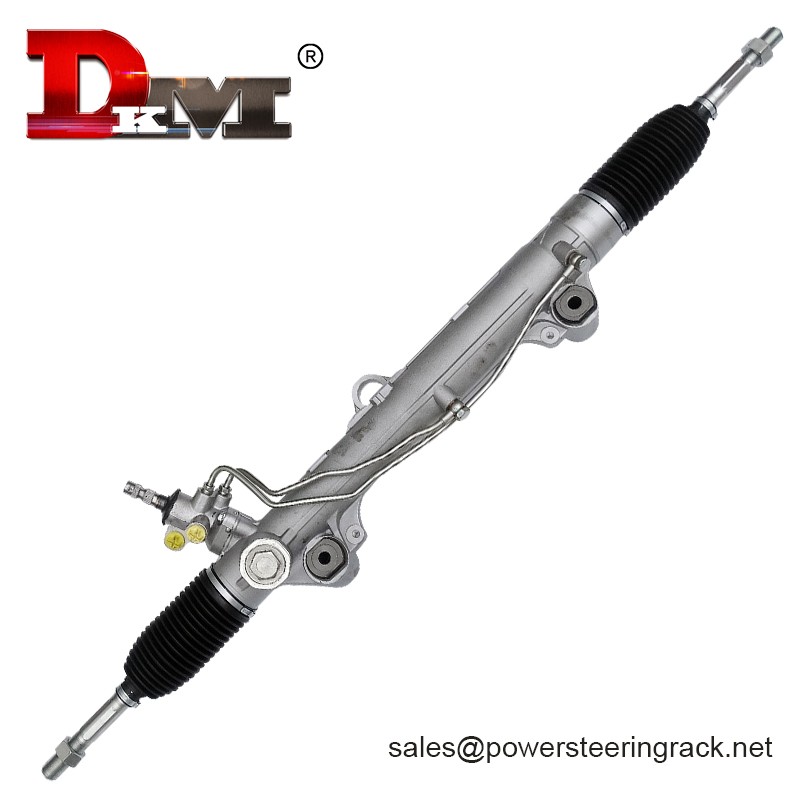
What is the basic working principle of the car steering rack?
The car steering rack and pinion system is the steering device used in most vehicles today. This system controls the direction of rotation of the front wheels by transmitting the rotational motion of the steering wheel to the pinion, which drives the rack to move horizontally. This design is relatively simple and efficient, and can provide good steering accuracy and road feel feedback.
What are the symptoms of car steering rack wear?
When the steering rack begins to wear out, the vehicle usually exhibits a series of abnormal phenomena.
Here are some of the most common symptoms:
1. Steering wheel shakes or loosens
2. Steering is not sensitive
3. Abnormal noise
4. Steering wheel is difficult to return automatically
5. Steering accuracy decreases
6. Steering system leakage
7. Steering wheel vibration
8. Uneven tire wear
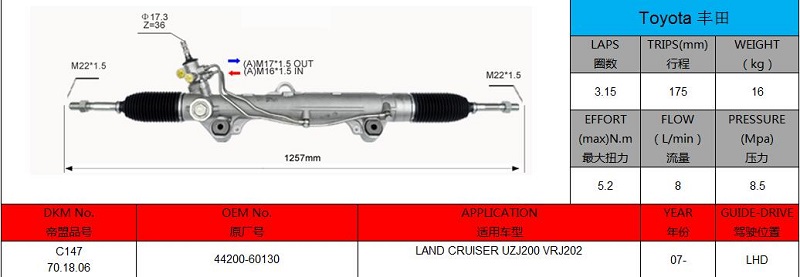
Steering wheel shakes or loosens
When the car steering rack is worn, the steering wheel may shake or loosen. This usually manifests as a slight shake of the steering wheel without any external force during driving, especially when driving at high speeds or turning. This phenomenon may be caused by the increase in the gap between the rack and the pinion, which prevents the rack from tightly engaging with the pinion, causing the steering wheel to shake.
Steering insensitivity
A worn car steering rack can cause insensitive steering response. In this case, the driver may feel that the vehicle's reaction speed slows down after turning the steering wheel, or that more force is required to complete the steering action. This is because the worn rack increases the resistance of the system, making steering difficult.
Abnormal noise
An abnormal noise in the steering system is another obvious symptom of car steering rack wear. This abnormal noise is usually produced when turning the steering wheel, and the sound may be a metal friction sound or a slight knocking sound. The source of this noise is usually due to the large gap between the rack and the pinion, or insufficient lubrication causing increased friction between metal parts.
Steering wheel automatic return difficulty Under normal circumstances, the steering wheel will automatically return to the straight-ahead position after the vehicle completes the turn. If the car steering rack is worn, the steering wheel may have difficulty returning or incomplete return. This is because the friction between the worn rack and pinion increases, hindering the automatic return function of the steering wheel.
Decreased steering accuracy
A worn steering rack will cause the vehicle's steering accuracy to decrease, and the driver may find it difficult to keep the steering wheel stable when the vehicle is driving in a straight line. Especially when driving at high speeds, the vehicle may have a slight left-right swaying phenomenon, which indicates that the steering system can no longer accurately convert the driver's operation into the vehicle's steering action.
Steering system leakage
In the hydraulic power steering system, the car steering rack and the steering pump work through hydraulic oil. If the seal of the car steering rack is worn or damaged, the hydraulic oil may leak. Hydraulic oil leakage usually causes the working pressure of the steering system to drop, thus affecting the steering effect. Signs of leakage can usually be found by checking whether there is fluid leakage under the vehicle.
Steering wheel vibration
Steering wheel vibration is another common symptom of car steering rack wear. The driver may feel a slight vibration in the steering wheel during driving, especially when turning or passing uneven roads. This vibration may be due to uneven wear on the rack surface, resulting in irregular force transmission when steering.
Uneven tire wear
A worn car steering rack can also cause inaccurate wheel alignment of the vehicle, which in turn causes uneven tire wear. Drivers can determine whether there is a problem with the steering system by checking the wear of the tires. If excessive wear is found on the inside or outside of the tire, it may mean that the car steering rack is worn and needs to be repaired.
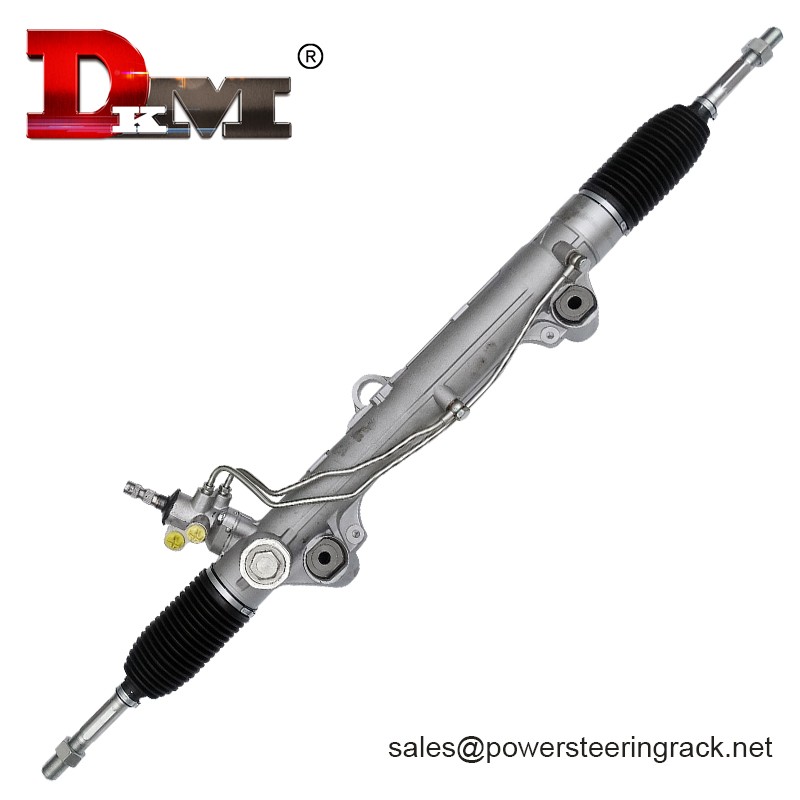
What are the potential dangers of car steering rack wear?
Identifying the symptoms of car steering rack wear is not only to extend the service life of the components, but more importantly to ensure driving safety. As an important part of the vehicle's steering system, the wear of the car steering rack may lead to a series of potential dangers:
Steering failure
A severely worn car steering rack may cause steering failure. In extreme cases, wear between the rack and pinion may cause the steering wheel to lose control, making it impossible to properly control the steering of the vehicle. This situation is particularly dangerous when driving at high speeds and may cause serious traffic accidents.
Deteriorated handling
A worn steering rack will significantly reduce the handling of the vehicle. The driver may find that the vehicle is slow to respond when turning and the steering angle is difficult to control. This not only affects the driving experience, but may also lead to operational errors in emergency situations.
Unstable vehicle driving
A worn steering rack may also cause the vehicle to be unable to remain stable when driving in a straight line, and the vehicle may have a slight left-right deviation. This situation will increase the difficulty of the driver's operation, especially when driving at high speeds, this instability may make it difficult for the driver to control the vehicle.
Reduced vehicle safety
In general, steering rack wear will significantly reduce the overall safety of the vehicle. Any problems related to the steering system will directly affect the driver's ability to control the vehicle, thereby increasing the risk of accidents. Therefore, once the above symptoms are found, the driver should immediately check and repair them to ensure the safety of the vehicle.
How to prevent car steering rack wear?
First, regularly check the various components of the steering system, including the car steering rack, the state of the steering hydraulic oil, and the wear of the pinion. Early detection of signs of wear can be repaired in time to avoid more serious problems. Secondly, avoid intense driving, especially avoid frequent sharp turns and overload steering. These driving behaviors will cause additional stress on the car steering rack and accelerate its wear.
In the hydraulic power steering system, the quality of the steering fluid has a direct impact on the wear of the rack and pinion. Regularly replacing the steering fluid and keeping the internal lubrication of the system can effectively reduce wear. In addition, avoid overloading, which will increase the burden on the steering system and accelerate the wear of the steering rack. Keeping the vehicle within a reasonable load range will help extend the service life of the steering system.
For reliable wholesale steering solutions, choose DKM Company, a leading Chinese manufacturer with 25+ years of expertise. Our extensive product line includes gear rack steering systems for Toyota, Hyundai, Buick, and other international brands. Equipped with over 280 machines, our factory delivers high-quality products at low prices. Buyers from Europe, America, and Asia trust our factory-direct prices, bulk discounts, and customized production. Contact us today for competitive quotes and efficient supply solutions.

